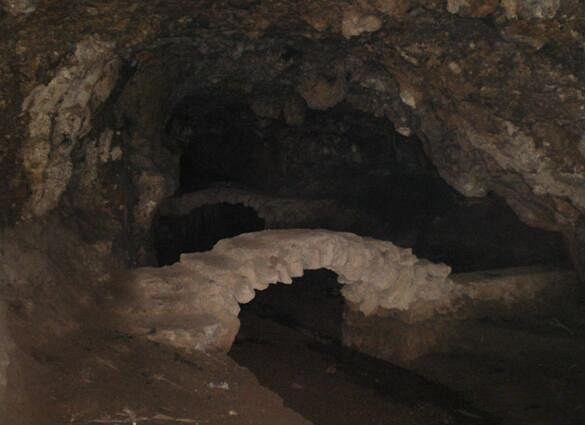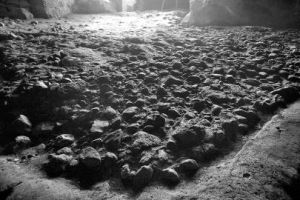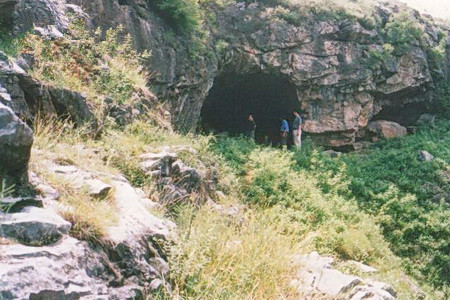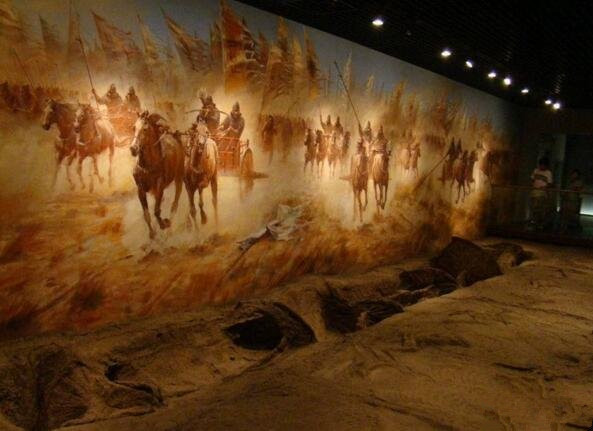The Ancient Culture Sites in Zhaotong
Chinese Name: 昭通古文化遗址
English Name: The Ancient Culture Sites in Zhaotong
The Ancient Culture Sites in Zhaotong are significant historical relics, rich with cultural heritage. Here, you can find a large number of unearthed artifacts that bear witness to ancient history.
Basic Information
Zhaotong, located in Yunnan Province, is home to numerous ancient cultural sites. Some of the main sites include:
1. Guoshandong Relics:
Guoshandong is situated 15 kilometers north of Zhaotong City, in the village of Guoshandong near Beizha Town. The cave comprises two parts: a larger front cave facing slightly northeast, about 10 meters wide and 5 meters high, and a smaller back cave facing southeast. In November 1982, animal fossils and a human tooth fossil were discovered around 20 meters inside the back cave. These include fossils of animals like the Oriental saber-toothed elephant, Chinese rhinoceros, and monkeys, dating back to the Late Pleistocene. The human tooth fossil, named the “Zhaotong Man,” is the first early Homo sapiens fossil discovered in Yunnan Province. Additionally, a Neolithic site was found on the left side of the front cave.
2. Yezhu Cave Neolithic Relics:
Located 300 meters north of Xunlongwan Village in Sayi Township, this cave is 3-4 meters wide, 1.5-3 meters high, and over 10 meters deep, with branching side caves. Artifacts unearthed here include stone adzes, stone axes, net weights, sand-tempered red pottery, gray pottery, a human mandible, and bones of wild cattle and dogs. The stone tools appear cruder compared to those found at Guoshandong, suggesting that the Yezhu Cave site might be older.
3. Yeshizhai Neolithic Relics:
This site is located 5 kilometers east of Ludian County town, in the Yeshizhai area of Taoyuan Township. Covering an area of about 1 square kilometer, the relics are primarily concentrated along the banks of a small river. The cultural layer is 1.3 meters thick, and artifacts such as sand-tempered red pottery, polished black pottery, gray pottery, ancient tombs, and semi-subterranean house foundations have been discovered here. The Yeshizhai site is one of the largest and best-preserved Neolithic village sites in Yunnan Province, providing valuable research opportunities. In December 1987, it was designated as a Provincial Key Cultural Relic Protection Unit.
4. Machang Neolithic Relics:
Situated 5 kilometers east of Ludian County town, near Hulukou Village in Ciyuan Township, the Machang site spans over 100,000 square meters. It is located near water and mountains, with cultural layers primarily along the eastern, southern, and western edges of the hills. The western cultural layer is up to 1.3 meters thick, divided into upper and lower layers, containing burnt red earth, charcoal fragments, and pottery pieces. More than 500 pottery fragments have been unearthed, mostly made of gray clay, with some red and black clay pieces. Stone tools such as knives and axes are also found, displaying fine craftsmanship and advanced drilling techniques.
5. Late Period Tombs:
These tombs are located in the center of Qiaojia County, at Xiaodongmen. From the late Qing Dynasty to the Republic of China era, this site housed various government offices. Since 1950, it has been used as the backyard of the county committee and government office buildings, and systematic excavations have not been conducted. However, construction projects have occasionally unearthed artifacts. In 1984, six tombs were discovered during a building project, yielding three pottery items. In 1990, further construction revealed stone slab tombs, leading to a rescue excavation that uncovered 19 tombs and over 50 artifacts, including pottery, stone, bone, and shell items. The stone coffins were made of natural sandstone, and all the deceased were oriented southward. These tombs are preliminarily dated to the Late Neolithic Period.
The ancient culture sites in Zhaotong are an integral part of China’s historical and cultural legacy, rich in heritage and archaeological value.
How to Get There
To visit the Ancient Culture Sites in Zhaotong, you can fly to Zhaotong Airport, which is well-connected with major cities in China. From the airport, you can take a taxi or a bus to the city center. Zhaotong is also accessible by train and long-distance bus from nearby cities like Kunming. Once in Zhaotong, hiring a local guide or renting a car would be the most convenient way to reach the various cultural sites, which are scattered across different villages and towns.

Travel Tips
- Advance Research: Before you go, research information about the Zhaotong Ancient Culture Sites, including opening hours, ticket prices, and transportation routes. Reliable information can be found on official tourism websites or by consulting local tourism agencies.
- Best Time to Visit: Try to avoid peak tourist seasons and national holidays to enjoy a quieter and more immersive experience at the cultural sites.
- Respect the Artifacts: Follow the site regulations, avoid touching or damaging artifacts, and maintain a respectful attitude towards the historical relics. Keep noise levels low to preserve the experience for other visitors.
- Wear Comfortable Clothing: Since visiting the cultural sites often involves a lot of walking, wear comfortable shoes and weather-appropriate clothing. Bring sunscreen, a hat, and sunglasses to protect against sun exposure.
- Bring Supplies: Some sites may not have nearby facilities for food and water. Carry enough water and snacks to stay hydrated and energized during your visit.
- Safety First: Pay attention to your safety, especially when exploring caves or uneven terrain. Follow warning signs and guidelines to avoid accidents.
- Respect Local Customs: Zhaotong has unique cultural traditions. Show respect for local customs and practices to ensure a harmonious interaction with the local community.
- Plan Your Route: The ancient cultural sites in Zhaotong are spread across a wide area. Plan your itinerary in advance to cover the key sites and manage your time efficiently.
- Protect the Environment: Help preserve the natural beauty and historical integrity of the sites by not littering or damaging vegetation. Keep the ancient sites clean and well-preserved for future generations to enjoy.

 7 Days GolfingTour
7 Days GolfingTour
 8 Days Group Tour
8 Days Group Tour
 8 Days Yunnan Tour
8 Days Yunnan Tour
 7 Days Shangri La Hiking
7 Days Shangri La Hiking
 11 Days Yunnan Tour
11 Days Yunnan Tour
 6 Days Yuanyang Terraces
6 Days Yuanyang Terraces
 11 Days Yunnan Tour
11 Days Yunnan Tour
 8 Days South Yunnan
8 Days South Yunnan
 7 Days Tea Tour
7 Days Tea Tour
 8 Days Muslim Tour
8 Days Muslim Tour
 12 Days Self-Driving
12 Days Self-Driving
 4 Days Haba Climbing
4 Days Haba Climbing
 Tiger Leaping Gorge
Tiger Leaping Gorge
 Stone Forest
Stone Forest
 Yunnan-Tibet
Yunnan-Tibet
 Hani Rice Terraces
Hani Rice Terraces
 Kunming
Kunming
 Lijiang
Lijiang
 Shangri-la
Shangri-la
 Dali
Dali
 XishuangBanna
XishuangBanna
 Honghe
Honghe
 Kunming
Kunming
 Lijiang
Lijiang
 Shangri-la
Shangri-la
 Yuanyang Rice Terraces
Yuanyang Rice Terraces
 Nujiang
Nujiang
 XishuangBanna
XishuangBanna
 Spring City Golf
Spring City Golf
 Snow Mountain Golf
Snow Mountain Golf
 Stone Mountain Golf
Stone Mountain Golf














